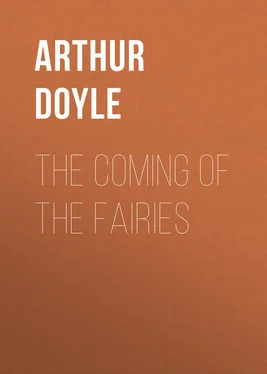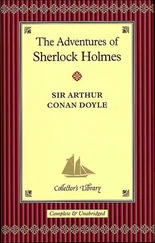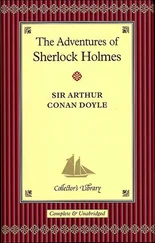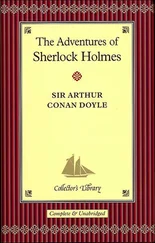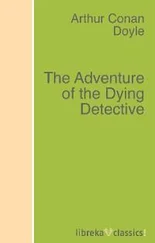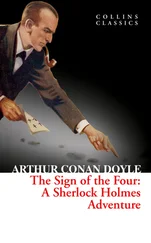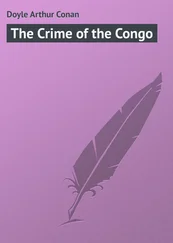Arthur Doyle - The Coming of the Fairies
Здесь есть возможность читать онлайн «Arthur Doyle - The Coming of the Fairies» — ознакомительный отрывок электронной книги совершенно бесплатно, а после прочтения отрывка купить полную версию. В некоторых случаях можно слушать аудио, скачать через торрент в формате fb2 и присутствует краткое содержание. Жанр: foreign_prose, на английском языке. Описание произведения, (предисловие) а так же отзывы посетителей доступны на портале библиотеки ЛибКат.
- Название:The Coming of the Fairies
- Автор:
- Жанр:
- Год:неизвестен
- ISBN:нет данных
- Рейтинг книги:4 / 5. Голосов: 1
-
Избранное:Добавить в избранное
- Отзывы:
-
Ваша оценка:
- 80
- 1
- 2
- 3
- 4
- 5
The Coming of the Fairies: краткое содержание, описание и аннотация
Предлагаем к чтению аннотацию, описание, краткое содержание или предисловие (зависит от того, что написал сам автор книги «The Coming of the Fairies»). Если вы не нашли необходимую информацию о книге — напишите в комментариях, мы постараемся отыскать её.
The Coming of the Fairies — читать онлайн ознакомительный отрывок
Ниже представлен текст книги, разбитый по страницам. Система сохранения места последней прочитанной страницы, позволяет с удобством читать онлайн бесплатно книгу «The Coming of the Fairies», без необходимости каждый раз заново искать на чём Вы остановились. Поставьте закладку, и сможете в любой момент перейти на страницу, на которой закончили чтение.
Интервал:
Закладка:
The Coming of the Fairies
PREFACE
This book contains reproductions of the famous Cottingley photographs, and gives the whole of the evidence in connection with them. The diligent reader is in almost as good a position as I am to form a judgment upon the authenticity of the pictures. This narrative is not a special plea for that authenticity, but is simply a collection of facts the inferences from which may be accepted or rejected as the reader may think fit.
I would warn the critic, however, not to be led away by the sophistry that because some professional trickster, apt at the game of deception, can produce a somewhat similar effect, therefore the originals were produced in the same way. There are few realities which cannot be imitated, and the ancient argument that because conjurers on their own prepared plates or stages can produce certain results, therefore similar results obtained by untrained people under natural conditions are also false, is surely discounted by the intelligent public.
I would add that this whole subject of the objective existence of a subhuman form of life has nothing to do with the larger and far more vital question of spiritualism. I should be sorry if my arguments in favour of the latter should be in any way weakened by my exposition of this very strange episode, which has really no bearing upon the continued existence of the individual.
Arthur Conan Doyle.Crowborough,
March 1922 .
CHAPTER I
HOW THE MATTER AROSE
The series of incidents set forth in this little volume represent either the most elaborate and ingenious hoax ever played upon the public, or else they constitute an event in human history which may in the future appear to have been epoch-making in its character. It is hard for the mind to grasp what the ultimate results may be if we have actually proved the existence upon the surface of this planet of a population which may be as numerous as the human race, which pursues its own strange life in its own strange way, and which is only separated from ourselves by some difference of vibrations. We see objects within the limits which make up our colour spectrum, with infinite vibrations, unused by us, on either side of them. If we could conceive a race of beings which were constructed in material which threw out shorter or longer vibrations, they would be invisible unless we could tune ourselves up or tone them down. It is exactly that power of tuning up and adapting itself to other vibrations which constitutes a clairvoyant, and there is nothing scientifically impossible, so far as I can see, in some people seeing that which is invisible to others. If the objects are indeed there, and if the inventive power of the human brain is turned upon the problem, it is likely that some sort of psychic spectacles, inconceivable to us at the moment, will be invented, and that we shall all be able to adapt ourselves to the new conditions. If high-tension electricity can be converted by a mechanical contrivance into a lower tension, keyed to other uses, then it is hard to see why something analogous might not occur with the vibrations of ether and the waves of light.
This, however, is mere speculation and leads me to the fact that early in May 1920 I heard, in conversation with my friend Mr. Gow, the Editor of Light , that alleged photographs of fairies had been taken. He had not actually seen them, but he referred me to Miss Scatcherd, a lady for whose knowledge and judgment I had considerable respect. I got into touch with her and found that she also had not seen the photographs, but she had a friend, Miss Gardner, who had actually done so. On May 13 Miss Scatcherd wrote to me saying that she was getting on the trail, and including an extract from a letter of Miss Gardner, which ran as follows. I am quoting actual documents in this early stage, for I think there are many who would like a complete inside view of all that led up to so remarkable an episode. Alluding to her brother Mr. Gardner, she says:
"You know that Edward is a Theosophist, has been for years, and now he is mostly engaged with lecturing and other work for the Society – and although for years I have regarded him as bathed in error and almost past praying for, I now find a talk with him an inspiring privilege. I am so very thankful that I happened to be in Willesden when his bereavement took place, for it was so wonderful to watch him, and to see how marvellously his faith and beliefs upheld and comforted him. He will probably devote more and more of his time and strength to going about the country lecturing, etc.
"I wish you could see a photo he has. He believes in fairies, pixies, goblins, etc. – children, in many cases, really see them and play with them. He has got into touch with a family in Bradford where the little girl, Elsie, and her cousin, Frances, constantly go into woods and play with the fairies. The father and mother are sceptical and have no sympathy with their nonsense, as they call it, but an aunt, whom Edward has interviewed, is quite sympathetic with the girls. Some little time ago, Elsie said she wanted to photograph them, and begged her father to lend his camera. For long he refused, but at last she managed to get the loan of it and one plate. Off she and Frances went into the woods near a waterfall. Frances ''ticed' them, as they call it, and Elsie stood ready with the camera. Soon the three fairies appeared, and one pixie dancing in Frances' aura. Elsie snapped and hoped for the best. It was a long time before the father would develop the photo, but at last he did, and to his utter amazement the four sweet little figures came out beautifully!
"Edward got the negative and took it to a specialist in photography who would know a fake at once. Sceptical as he was before he tested it, afterwards he offered £100 down for it. He pronounced it absolutely genuine and a perfectly remarkable photograph. Edward has it enlarged and hanging in his hall. He is very interested in it and as soon as possible he is going to Bradford to see the children. What do you think of this? Edward says the fairies are on the same line of evolution as the winged insects, etc., etc. I fear I cannot follow all his reasonings, but I knew you would be keenly interested. I wish you could see that photo and another one of the girls playing with the quaintest goblin imaginable!"
This letter filled me with hopes, and I renewed my pursuit of the photographs. I learned that they were two in number and that they had been sent for inspection to Miss Blomfield, a friend of the family. My chase turned, therefore, in that direction, and in reply to a letter of inquiry I received the following answer:
The Myrtles, Beckenham, June 21, 1920.Dear Sir,
I am sending the two fairy pictures; they are interesting, are they not?
I am sure my cousin would be pleased for you to see them. But he said (and wrote it to me afterwards) that he did not want them to be used in any way at present. I believe he has plans in regard to them, and the pictures are being copyrighted. I don't think the copyright will be his. He has not yet finished his investigations. I asked him if I might photograph them myself so as to have a few prints to give to friends interested, but he wrote that he would rather nothing was done at present.
I think my cousin is away from home just now. But his name is Edward L. Gardner, and he is President of one of the branches of the Theosophical Society (Blavatsky Lodge), and he lectures fairly often at their Hall (Mortimer Hall, Mortimer Square, W.). He lectured there a few weeks ago, and showed the fairies on the screen and told what he knew about them.
Yours sincerely, E. Blomfield.This letter enclosed the two very remarkable photographs which are reproduced in this volume, that which depicted the dancing goblin, and the other of wood elves in a ring. An explanatory note setting forth the main points of each is appended to the reproductions. I was naturally delighted at the wonderful pictures, and wrote back thanking Miss Blomfield for her courtesy, and suggesting that an inquiry should be set on foot which would satisfy me as to the genuine nature of the photographs. If this were clearly established I hoped that I might be privileged to help Mr. Gardner in giving publicity to the discovery. In reply I had the following letter:
Читать дальшеИнтервал:
Закладка:
Похожие книги на «The Coming of the Fairies»
Представляем Вашему вниманию похожие книги на «The Coming of the Fairies» списком для выбора. Мы отобрали схожую по названию и смыслу литературу в надежде предоставить читателям больше вариантов отыскать новые, интересные, ещё непрочитанные произведения.
Обсуждение, отзывы о книге «The Coming of the Fairies» и просто собственные мнения читателей. Оставьте ваши комментарии, напишите, что Вы думаете о произведении, его смысле или главных героях. Укажите что конкретно понравилось, а что нет, и почему Вы так считаете.
